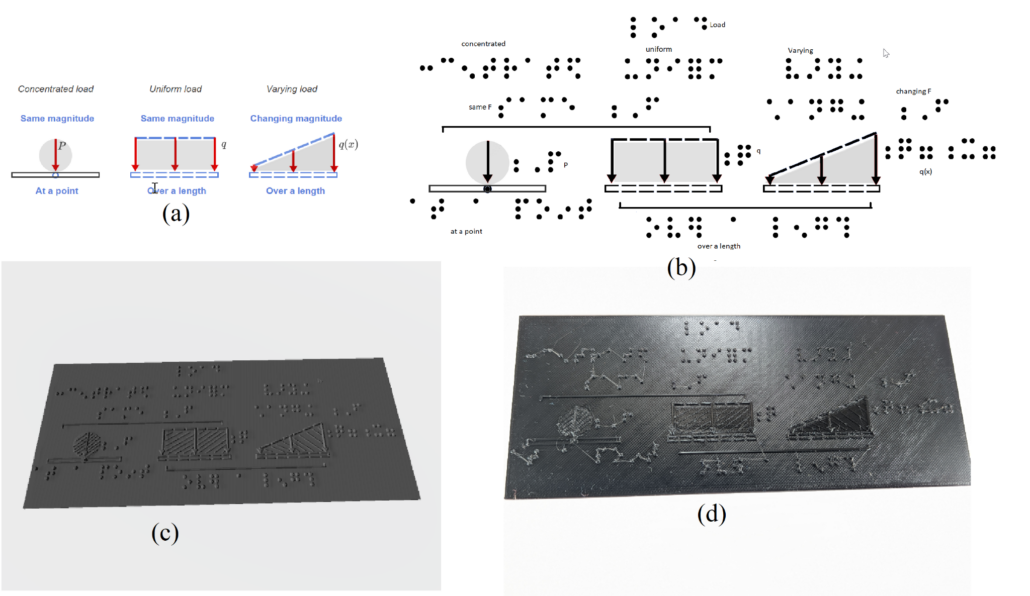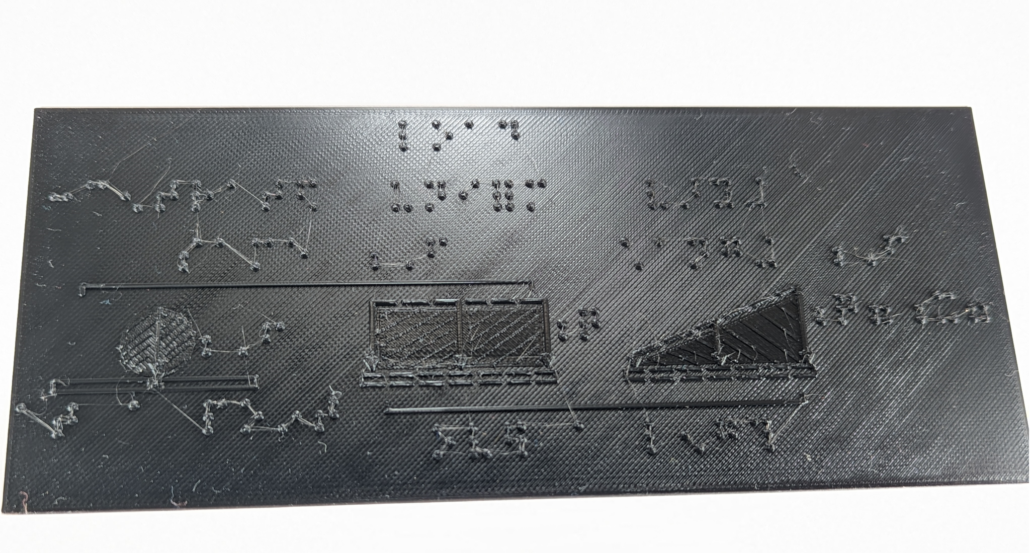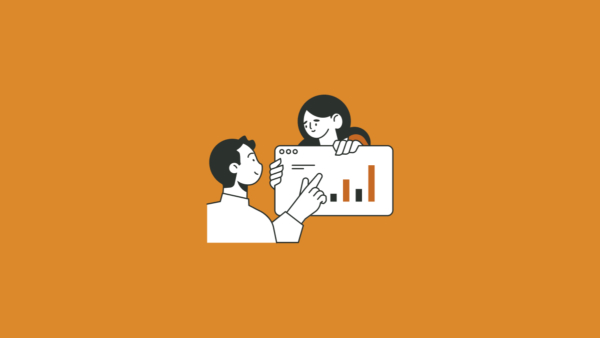Helping Students with Visual Impairments Succeed in STEM
A visual impairment shouldn’t stop anyone from earning an engineering degree, but in many cases it still does. Reversing this outcome is a major goal for the team here at zyBooks.
In fact, zyBooks is at the forefront of developing – and implementing – accessibility innovations to help students with visual impairments succeed in STEM. Innovations all educators should adopt. To learn more, we spoke with three engineering and science content experts who are leading the accessibility charge at zyBooks.
Read on.
zyBooks Accessibility Team
We spoke with three members of the zyBooks accessibility team:

Dr. Alicia Clark, engineering content developer
PhD in Mechanical Engineering, University of Washington; researcher in engineering education, fluid mechanics and medical ultrasound

Dr. Adrian Rodriguez, engineering content developer
PhD in Mechanical Engineering, University of Texas, Arlington; lecturer in mechanical engineering at the University of Texas, Austin

Dr. Greg Sirokman, engineering and statistics content developer
PhD in Inorganic Chemistry, MIT; former chemistry professor at Wentworth Institute of Technology
What are the challenges for students with visual impairments studying STEM subjects?
Dr. Greg Sirokman It’s quite difficult to convey to someone with a visual impairment the kinds of information that you find in an engineering or science or math curriculum. These disciplines tend to be very visual in how they’re taught.
To solve this problem, we’re working on parallel ways to deliver that same information, so people with visual impairments can study these subjects.
Dr. Adrian Rodriguez In my engineering teaching experience, and I think Greg and Alicia can also agree, I haven’t encountered many students with visual impairments. But I’ll say that’s probably a symptom of the fact that there’s no support for those students to feel like they can pursue a STEM field.
“With the accessibility options we’re developing here at zyBooks, we’re giving those students an opportunity they wouldn’t have had otherwise.”
Dr. Alicia Clark
Dr. Alicia Clark As Greg says, STEM is such a visual discipline, so if you do have a visual impairment it’s extremely difficult to even participate in a course. With the accessibility options we’re developing here at zyBooks, we’re giving those students an opportunity they wouldn’t have had otherwise. And since we’re building accessibility right into zyBooks, there is actually very little work a professor has to do to include it in their instruction.
How are you supporting visually impaired students studying STEM subjects?
Dr. Adrian Rodriguez We found in our research a huge lack of alt-text descriptions for images and graphics in engineering textbooks. So we started there, with images and zyBooks animations. We asked ourselves, how do we create a system to ensure that the alt-text descriptions are as complete and accessible as possible?
Alt-text for animations
Our author training manager, Jane Snare, established some foundational guidelines that we’re building on now. For example, with our animations, students see a static figure when they first scroll to an animated activity. We use that static figure to provide a 10,000 foot-level description. Then, we describe the animation in alt-text following a “natural order” of the graphic. We follow the steps and highlight any intermediate movement or actions that are important to convey. For example, if a squiggly line has some context to it, we want to make sure we capture that in the description.
The nice thing about this work is that we’re all subject matter experts developing the alt-text, rather than outsourcing it to third parties who may not have engineering experience. So we can make sure it’s accurately describing the animation concepts from a technical perspective.

Static figure from a zyBooks animation

zyBooks animation with captions shown

zyBooks animation alt-text
Consider colors
Dr. Alicia Clark Colors are also important. We established guidelines for the colors we select for animations. We make sure there’s enough contrast between certain colors so they’re more accessible for people with low vision requirements. We also choose colors that are color blind-safe, to make them easier to distinguish if you’re color blind. And in certain cases, we’ll frame animations or graphics with a black border to differentiate it from the text. So a lot of consideration goes into just the color choice.

zyBooks animation with high-contrast colors that is color-blind safe
Accessibility helps all students
Dr. Greg Sirokman Thinking about how you communicate an animation in a non-visual way means you have to think about how to simplify images, how every line drawn in an animation is maximized for utility. This approach actually benefits all students, visually impaired or not, because by simplifying images, we’re reducing cognitive load, and that helps students absorb the material more readily.
“This approach actually benefits all students, visually impaired or not, because by simplifying images, we’re reducing cognitive overload, and that helps students absorb the material more readily.”
Dr. Greg Sirokman
Accessibility for assessments
Dr. Alicia Clark I want to mention that we’re also developing alt-text for assessments, which is really important. This is a challenge, because when we’re describing detailed graphics, we sometimes just have to give students the answer, which isn’t ideal. We’re now developing a program that pulls data points from the graphics that students can interact with. It’s a work in progress but we want to develop a way for students with visual impairments to tackle assessment problems that are not currently accessible to them.
Where is accessibility for students with visual impairments heading?
Dr. Greg Sirokman One of my projects has been pushing the frontiers with accessibility. I was inspired by an article that appeared last summer in Science describing how chemists 3D printed lithophanes of gels and chemical spectra. These are three-dimensional images printed on translucent material that use tactile sense to visualize data. What the chemists found is that this approach helped all students retain the content better – students who were fully-sighted, visually impaired, and even completely blind.
3D printed graphics
I had an idea of applying this approach to our zyBooks animations and to incorporate Braille annotations. We followed the chemists’ methodology and created 3D printable files of the static figures of animations that you can download and send to a 3D printer. Most universities, even high schools, have 3D printers, so this is a really accessible way to communicate visual content to blind or visually impaired students. We’re working on perfecting this approach now.

Converting a graphic to a 3D printed image

3D printed image of a graphic
You’re opening up STEM education for students with visual impairments
Dr. Greg Sirokman In my previous life as a chemistry professor, we were required to convert physical books into braille to make them accessible for students with visual impairments. This was an incredibly time consuming and expensive process. Since our medium is now digital, it’s an order of magnitude easier to create the resources that can open new horizons for these students. This is an incredibly exciting opportunity for all of us.
“Since our medium is now digital, it’s an order of magnitude easier to create the resources that can open new horizons for these students. This is an incredibly exciting opportunity for all of us.”
Dr. Greg Sirokman





